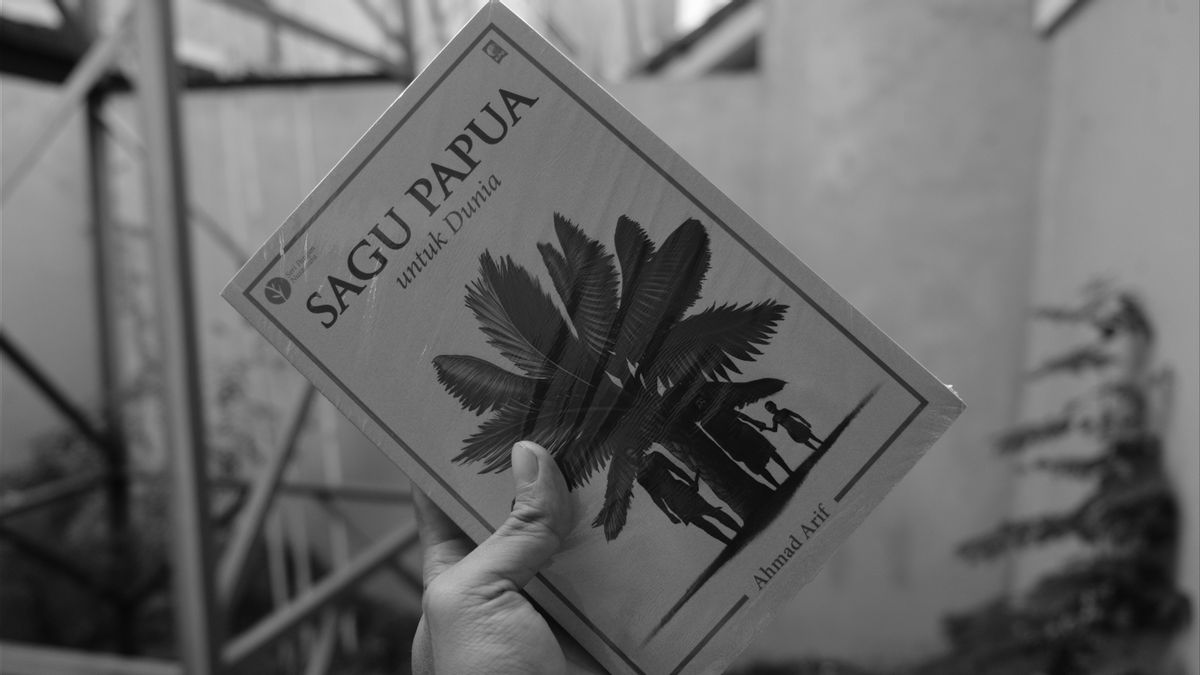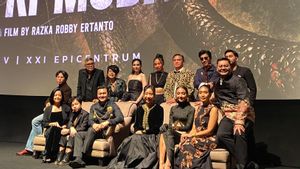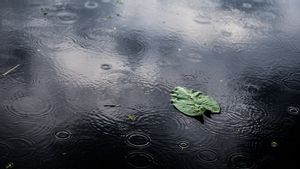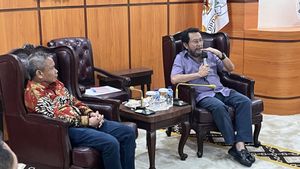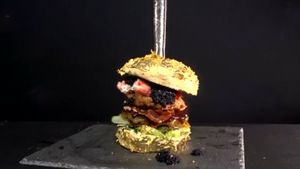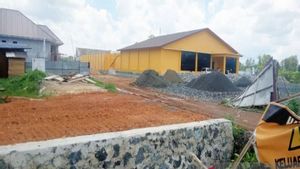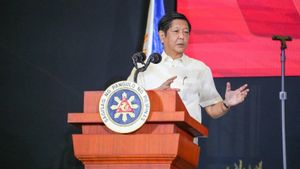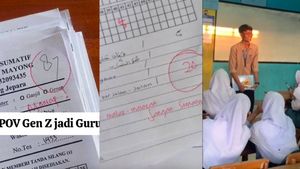JAKARTA - "Eating is not full if you haven't eaten rice." This opinion will be shared by all Indonesian people who inhabit some of the big islands such as Java, Sumatra and Kalimantan.
However, different assumptions were obtained when questions were directed to those who inhabit the islands of Sulawesi and Papua. Instead, they will say: Eating is not full if you haven't eaten sago.
The difference in perceptions of satiety and the diversity of staple foods is what proves that the archipelago is diverse rather than uniform. However, if analyzed more deeply, or turn the time back thousands of years.
An interesting fact will emerge. The fact is that before the Indonesian people consumed rice uniformly, there was a sago plant (metroxylon sp) which was starting to be recognized by the public as a solution to food security since a long time ago.
Papuan sago for the world
Even though now sago is only an alternative staple food in the archipelago, but optimism that sago will be victorious again as a food security solution for Indonesia in the future, was also presented by Ahmad Arif in his book entitled "Papuan Sago for the World".
Interestingly, the book with a total of 208 pages is divided into five sections. The first part is the Land of Origin of Sago. Then, followed by Sago is Mother, Hungry in the village of Sago, a future source of food, and Sago Papua for the world.
The first part, the Land of Origin of Sago. This is the most interesting part of the book by journalist Kompas, Ahmad Arif. How could not. It is in this section that the history of sago is at length revealed. Starting from the beginning, sago was known throughout the archipelago, not only in Sulawesi and Papua.
At that time, sago had become a staple food in the archipelago. Even long before the Dutch landed their feet on Mother Earth. One proof of this is the exploration of the famous adventurer of the 13th century, Marco Polo.
Based on his exploration of the archipelago, Marco Polo also described that sago has an important role as a source of food for the community, apart from rice.
“You have to know that they have a kind of tree which has a thin bark and inside there is flour which is very good for eating. And I further tell you that Mr. Marco Polo has tried this flour and made bread (which is) very good to eat, "it is written on page 19.
The author also reveals, if we trace it back to the past years, then an interesting fact about sago has been present since the days of the Srivijaya Kingdom in South Sumatra. At that time, sago was once an important food source capable of supporting the kingdom's food needs. This can be seen from the Talang Tuo inscription from the seventh century.
In the Talang Tuo inscription, it is mentioned that Sri Ksetra Park was made by King Sriwijaya. In the garden also grows a variety of plants. Among other things, sago, coconut, areca nut, bamboo and palm trees. Regarding the truth of the contents of the inscription, the owner of the writing refers to the current reality, through the many local specialties that make sago the main ingredient. Pempek is the most popular.
The second part, Sago is Mother. This section contains a narrative related to the importance of sago for the Papuan people so that sago is considered the initial source of food consumed by modern humans (homo sapiens) upon arrival in Southeast Asia.
This evidence was presented by the author through a recorded interview with one of the traditional leaders of Kampung Saga, Metemani District, Sorong Regency, Yosua Muguratatu. From him got an understanding that sago is like a mother to Papuans.
Not only as a source of food. Sago is also an inseparable part of their culture. If the Papuans leave sago, they will lose their roots.
The third part, Hunger in Sago Village. In this section, the authors reveal the narrative of food uniformity which, instead of alleviating the problem of malnutrition, has even made Papua a sago granary to have the title of having been visited by this problem.
The community which originally had a variety of staple foods. Starting to switch to rice, and also gandung in the form of instant noodles. As a result of this uniformity, those who used to live in sufficient nutrition, now can only wait for staple food that is difficult to grow in their area.
The fourth part, Future Sources of Food. Although the staple food has been uniformed with rice. Over time, the population rate continues to grow, making this country also import rice to meet national food.
The narrative is raised by the author so that sago can be the answer to the fulfillment of the national food stock. The proof is, if rice depends on the weather and season, then it is different from sago which does not depend on the season at all.
In addition, sago also has flexibility in use and also has a lot of nutritional content, both of which make it a processed product, as well as various other functions such as raw materials for sugar and bioethanol.
The fifth part, Papuan Sago for the World. In this section, the author describes the opportunities and challenges of Papuan sago. So that all Indonesian people are optimistic that the future of Sago Papua will match and even surpass neighboring Malaysia as the market leader in the world sago export market.
Full of inspiration
Reading through this book clearly brings us to add more treasure in thinking. So, anyone who reads will be brought to enjoy the historical narrative of sago, the superiority of sago, those who daily use sago and those who struggle to make sago increasingly known nationally and also in the world.
In fact, people who read it will consider sago not only as a source of food. Moreover, sago has become an important component for housing. The leaves become the roof and the fronds become the walls of the house, while the bark becomes the floor of the house on stilts.
New knowledge, interesting storytelling, and good references are the writer's ingredients in inviting readers to care for a moment, for a moment to think, for a moment to invite to promote sago as a solution to the food security of the archipelago, as well as the world.
Finally, to complete the overall review, it is better to attach back a piece of speech by the First President of Indonesia, Bung Karno at the Bogor Agricultural Institute in 1952. He revealed:
Why do we have to throw away dividends of 120 to 150 million dollars we use each year to buy rice from abroad? If we use 150 million dollars for development, that would be great.
Detail:
Book Title: Papuan Sago for the World
Author: Ahmad Arif
First Published: November 2019
Publisher: KPG (Popular Gramedia Library)
Number of Pages: 208
The English, Chinese, Japanese, Arabic, and French versions are automatically generated by the AI. So there may still be inaccuracies in translating, please always see Indonesian as our main language. (system supported by DigitalSiber.id)
